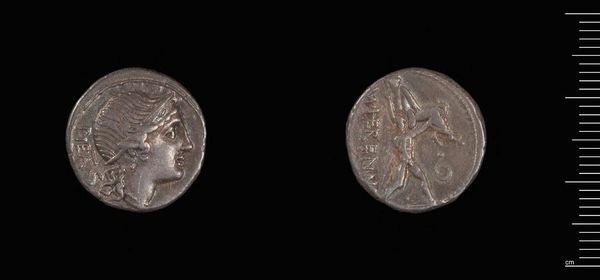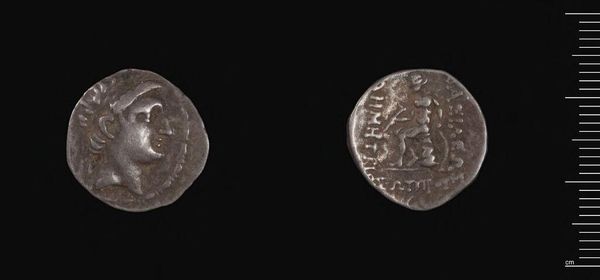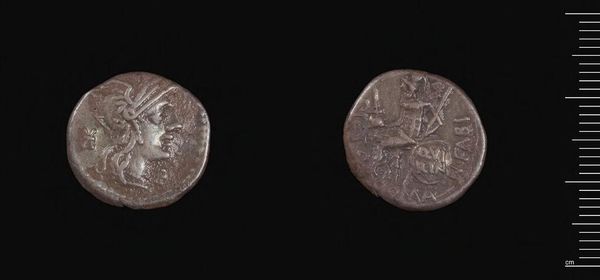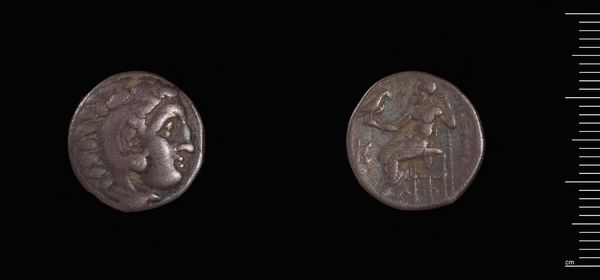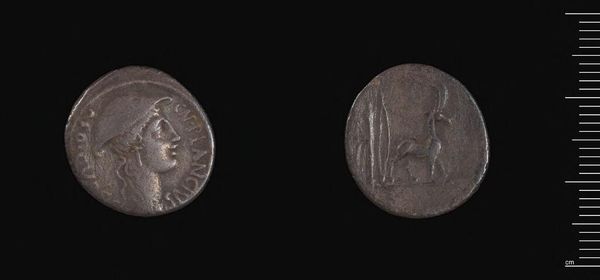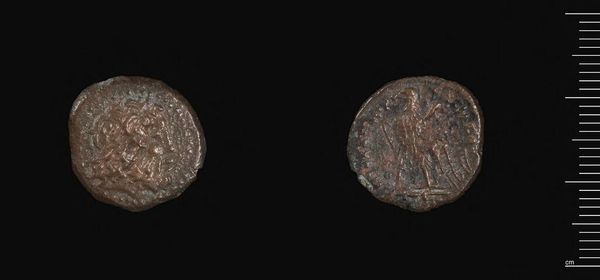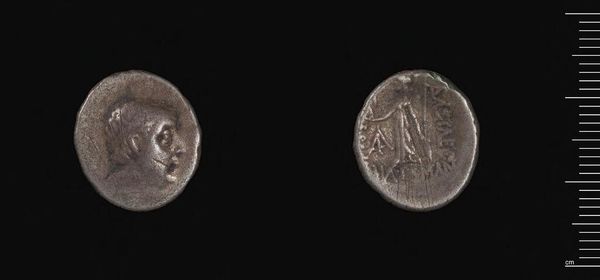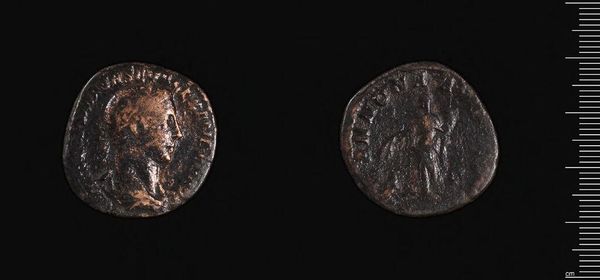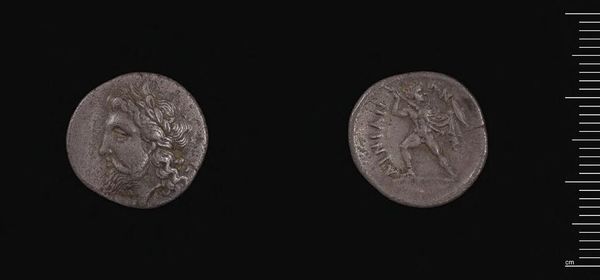
Dimensions: 4.13 g
Copyright: CC0 1.0
Editor: This is a Drachm of Antiochos I Soter of Syria. It's quite small and the details are worn, but I can still make out a face on one side and some sort of figure on the other. What kind of imagery was typically used on coins like these? Curator: Coins are fascinating time capsules. The imagery isn't just decorative, it’s a language of power and identity. Notice the diademed head of Antiochos; it’s a deliberate echo of Alexander the Great, associating Antiochos with that legacy. The seated Apollo on the reverse, what does that evoke for you? Editor: Well, Apollo is associated with light, music, and healing, so maybe the coin is suggesting that Antiochos is a bringer of those things? Curator: Precisely! And consider that coins circulated widely. This wasn't just money; it was a portable piece of propaganda, constantly reinforcing the ruler's image and aspirations throughout the kingdom. It is a powerful symbol. Editor: That's so interesting! I never thought about coins being used to convey cultural messages back then. Curator: Indeed. Every image, every choice, was imbued with meaning, shaping perceptions of power and culture.
Comments
No comments
Be the first to comment and join the conversation on the ultimate creative platform.
